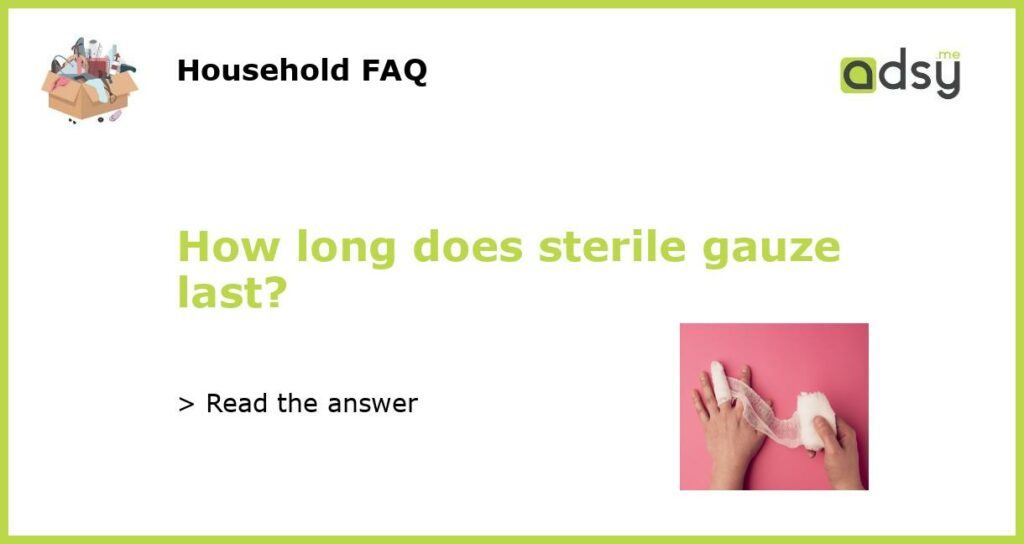How Long Does Sterile Gauze Last?
Sterile gauze is a common medical supply that is used for wound dressings, bandages, and other healthcare purposes. It is important to know how long sterile gauze lasts in order to ensure its effectiveness and safety for patients. In this article, we will explore the shelf life of sterile gauze and factors that can affect its expiration date.
What is Sterile Gauze?
Sterile gauze is a type of medical dressing that is made of cotton or other materials. It is designed to be free from any microorganisms or contaminants that may cause infection or harm to patients. Sterilization processes such as gamma radiation or ethylene oxide gas are used to eliminate bacteria, viruses, and other pathogens from gauze before it is packaged and sealed.
Shelf Life of Sterile Gauze
The shelf life of sterile gauze can vary depending on several factors, including the packaging and storage conditions. Generally, sterile gauze is labeled with an expiration date that indicates the time period during which it is considered to be sterile. This expiration date is typically based on recommendations from regulatory bodies, such as the Food and Drug Administration (FDA).
The expiration date of sterile gauze can range from one to five years, depending on the manufacturer and the specific product. It is important to check the packaging for the expiration date and to use sterile gauze within the specified period. Using expired gauze may increase the risk of infection or other complications.
Factors that Can Affect Sterile Gauze
While sterile gauze generally has a defined shelf life, it is important to be aware of factors that can affect its sterility and effectiveness over time. These factors include:
- Storage conditions: Sterile gauze should be stored in a cool, dry place away from direct sunlight and moisture. Exposure to heat, humidity, or sunlight can degrade the packaging and compromise the sterile barrier.
- Damage to packaging: Any damage to the packaging, such as cuts or tears, can compromise the sterile barrier and potentially introduce contaminants. It is important to inspect the packaging for any signs of damage before using sterile gauze.
- Improper handling: Sterile gauze should only be handled by healthcare professionals or individuals who have been trained in proper aseptic techniques. Contamination can occur if gauze is touched by unclean hands or comes into contact with non-sterile surfaces.
- Product recalls: Occasionally, sterile gauze products may be recalled by the manufacturer due to issues with sterility or packaging. It is important to stay informed about product recalls and to discontinue use if necessary.
When to Replace Sterile Gauze?
In addition to the expiration date, there are certain signs that indicate it is time to replace sterile gauze:
- Visible contamination: If the gauze appears dirty, discolored, or has any visible signs of contamination, it should be replaced immediately.
- Unpleasant odor: An unpleasant odor may be a sign that the gauze is no longer sterile and has been contaminated.
- Expired date: Using sterile gauze beyond its expiration date is not recommended, as it may no longer be sterile or effective.
- Change in packaging integrity: If the packaging is damaged or compromised in any way, the sterile gauze should not be used.
In conclusion, the shelf life of sterile gauze can vary depending on various factors, including the manufacturer and storage conditions. It is important to check the expiration date and to store sterile gauze properly to ensure its effectiveness and safety. Regularly inspecting the packaging and replacing gauze when necessary is also crucial to maintain sterility and minimize the risk of infection.






